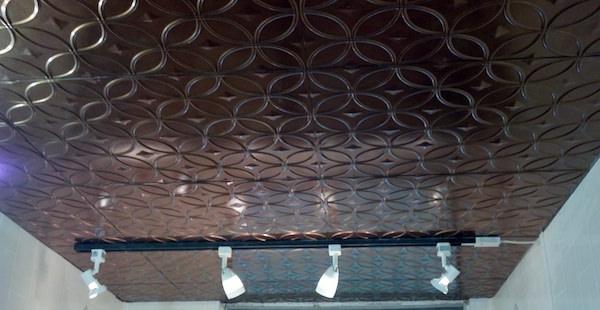
The tin panel is enjoying a revival of sorts these days. Be it tin ceilings or punched tin panels for cabinetry and furniture, this lightweight, decorative, and great looking building material is catching on with homeowners across the country.
Historic Roots
Tin paneling owes much of its current success to its historical roots. The use of tin paneling for ceilings and walls peaked in the early 1900’s, and anyone who frequents shops or restaurants on Main Streets across the nation knows how attractive and classy tin ceilings and wall coverings can look. They are also a relatively inexpensive building material, equally effective as ceiling and wall coverings, fire barriers, and as decorative accents. All that being said, it’s tough to beat tin paneling anywhere in your home.
Tin Panel Basics
If you’re interested in installing these tried and true panels in your home, it’s a good idea to polish up on what’s available to choose from. Here’s a quick list of different styles of tin paneling to help educate you on the world of tin paneling.
- Pressed Tin Paneling is the standard panel used for ceilings and walls. They are stamped at the factory to create abstract designs or floral patterns that can be integrated with other panels over a large area, such as a ceiling or wall. Most homeowners who purchase genuine tin choose to leave it as is, however, you can paint over tin paneling if you so desire.
- Faux Tin refers to panels that resemble real tin paneling, but that are made out of a composite material. These are usually cheaper than the real thing, and are often pre-painted in the factory. You won’t be able to tell the difference between these and the genuine article once they are installed and covered with a coat of paint, making them an attractive, and cost effective alternative, if painted tin panels are part of your initial design plans.
- Aluminum Panels are the most popular form of “tin” paneling being sold today. They’re cheaper, look just as good as tin (you can’t tell the difference between the two), and are lighter in weight, making them easier to install. They are a little more susceptible to dents and dings than real tin, but since they’re most often used in ceiling applications, that ceases to be an issue once they’ve been set in place (unless you’re teenager decides to hit pop flies in the living room, of course).
- Reclaimed Tin Paneling is the product of choice for those with green sensibilities, since there are warehouses full of salvaged old panels from the original tin paneling craze. You can’t customize your design in the same fashion as if you purchase new panels, but you’ll still be getting a beautiful, quality product. And one with a little history to boot.
Ready to start your tin panel?
Find Pros- Punched Tin Panel is a style of panel that elevates tin work above a simple building material, and transforms it into an art form. Common in the 1800s in cabinetry, pie safes, and other kitchen furniture, punched tin paneling protected perishable goods from vermin and insects, while still allowing for valuable air circulation. Like other tin paneling, punched tin panels are making a comeback, especially in their traditional role as decorative accents in cabinetry and fine furniture.
If you’re interested in installing tin panel in any of its forms, talk to a supplier or contractor who works with this wonderful building material about choosing the right panels and design for your home and needs.
 Decorative Moldings: The Perfect Cover-up
Decorative Moldings: The Perfect Cover-up  Wood Veneer: An Upside to Being Shallow
Wood Veneer: An Upside to Being Shallow  Ceiling Mirrors – Considerations, Types & Options
Ceiling Mirrors – Considerations, Types & Options  The Basics of Ceramic Wall Tile Installation
The Basics of Ceramic Wall Tile Installation  Wallpaper Prep
Wallpaper Prep 

Are You Familiar With This Topic? Share Your Experience.